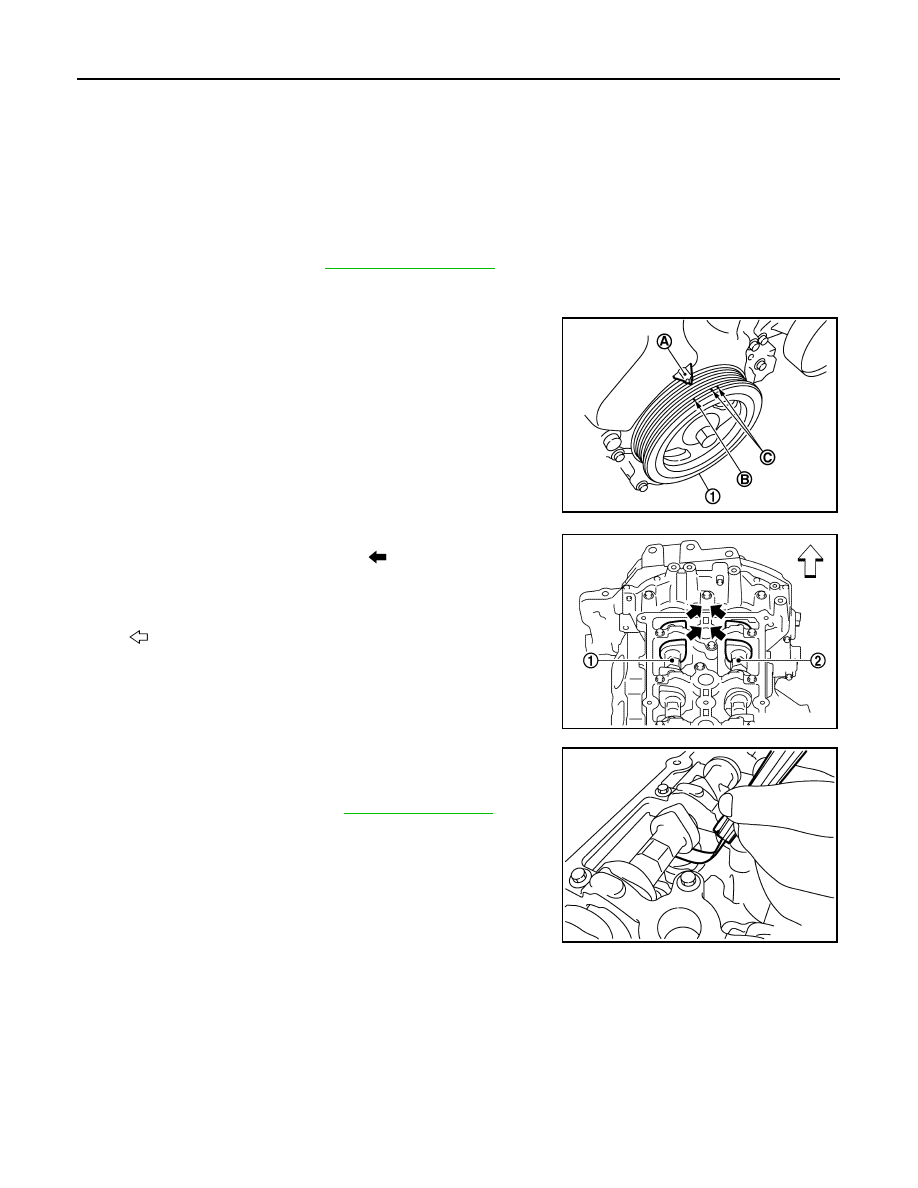Nissan Juke F15. Manual - part 615

EM-14
< BASIC INSPECTION >
[MR FOR NISMO RS MODELS]
CAMSHAFT VALVE CLEARANCE
BASIC INSPECTION
CAMSHAFT VALVE CLEARANCE
Inspection and Adjustment
INFOID:0000000012197237
INSPECTION
Perform inspection as follows after removal, installation or replacement of camshaft or valve-related parts, or if
there is unusual engine conditions regarding valve clearance.
1. Remove rocker cover. Refer to
.
2. Measure the valve clearance with the following procedure:
a. Set No. 1 cylinder at TDC of its compression stroke.
• Rotate crankshaft pulley (1) clockwise and align TDC mark (no
paint) (B) to timing indicator (A) on front cover.
• At the same time, check that both intake and exhaust cam
noses of No. 1 cylinder face inside (
) as shown in the figure.
• If they do not face inside, rotate crankshaft pulley once more
(360 degrees) and align as shown in the figure.
b. Use a feeler gauge, measure the clearance between valve lifter
and camshaft.
C : White paint mark (Not use for service)
PBIC3960E
1
: Camshaft (INT)
2
: Camshaft (EXH)
: Engine front
JPBIA4347ZZ
Valve clearance
: Refer to
.
PBIC3192J